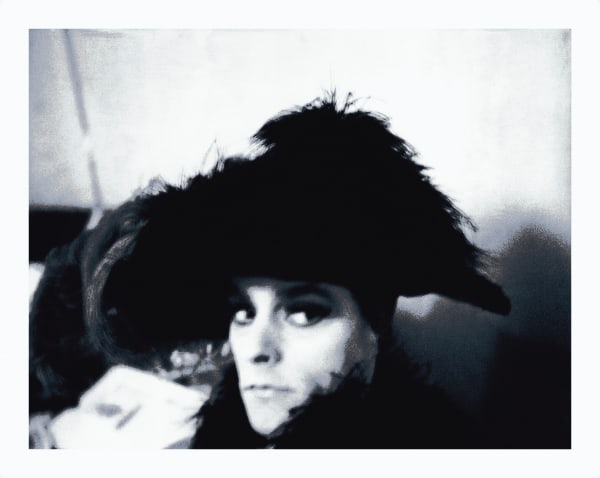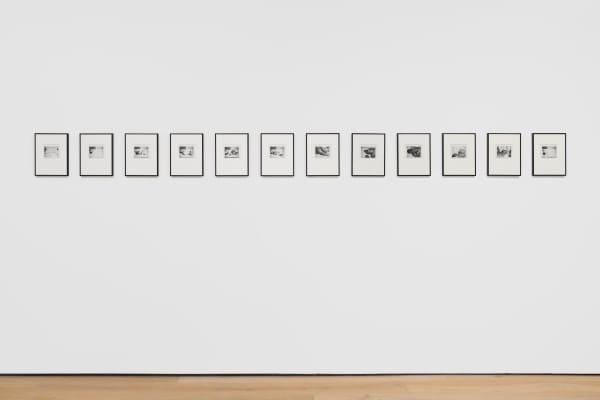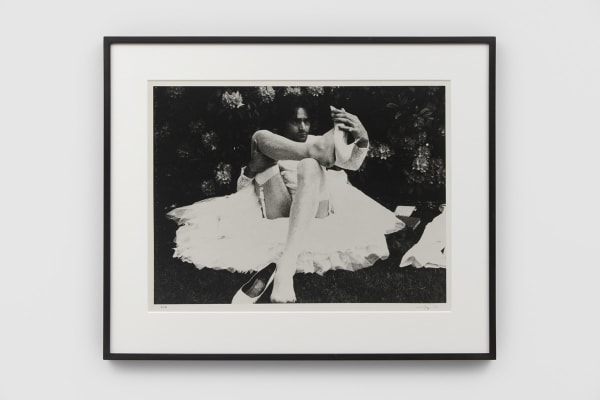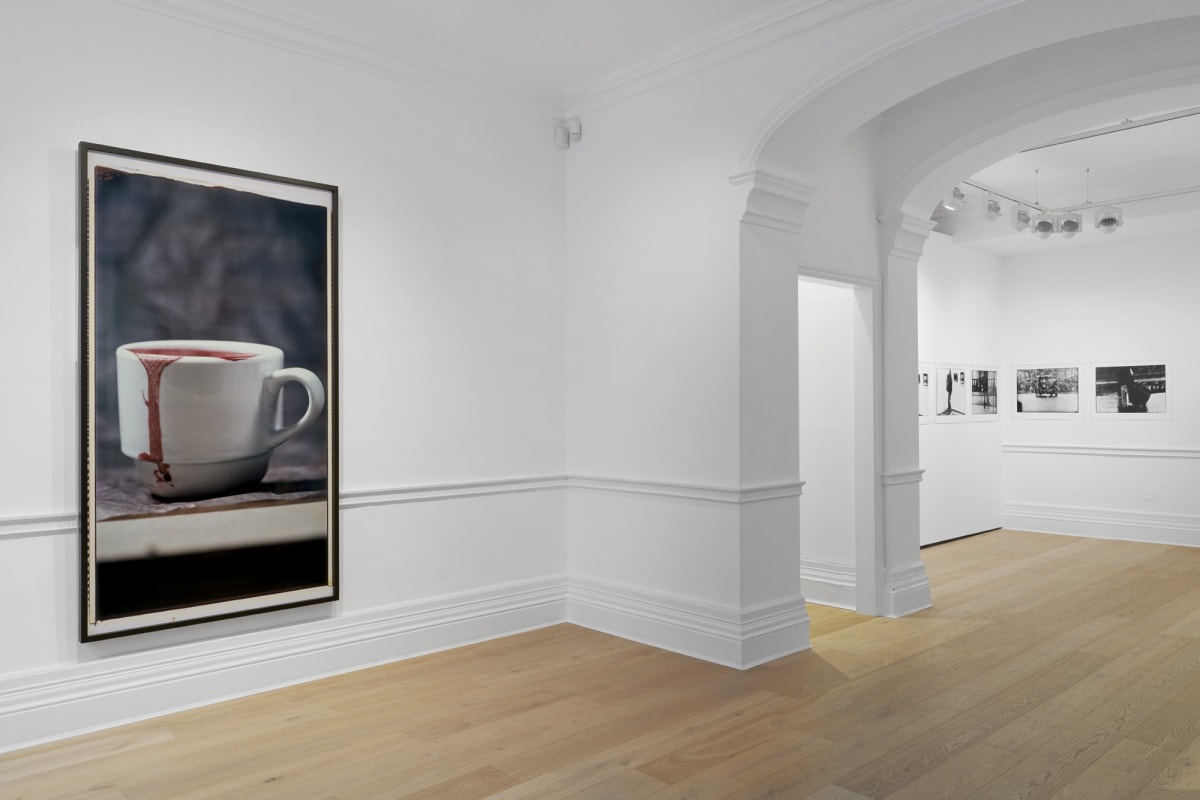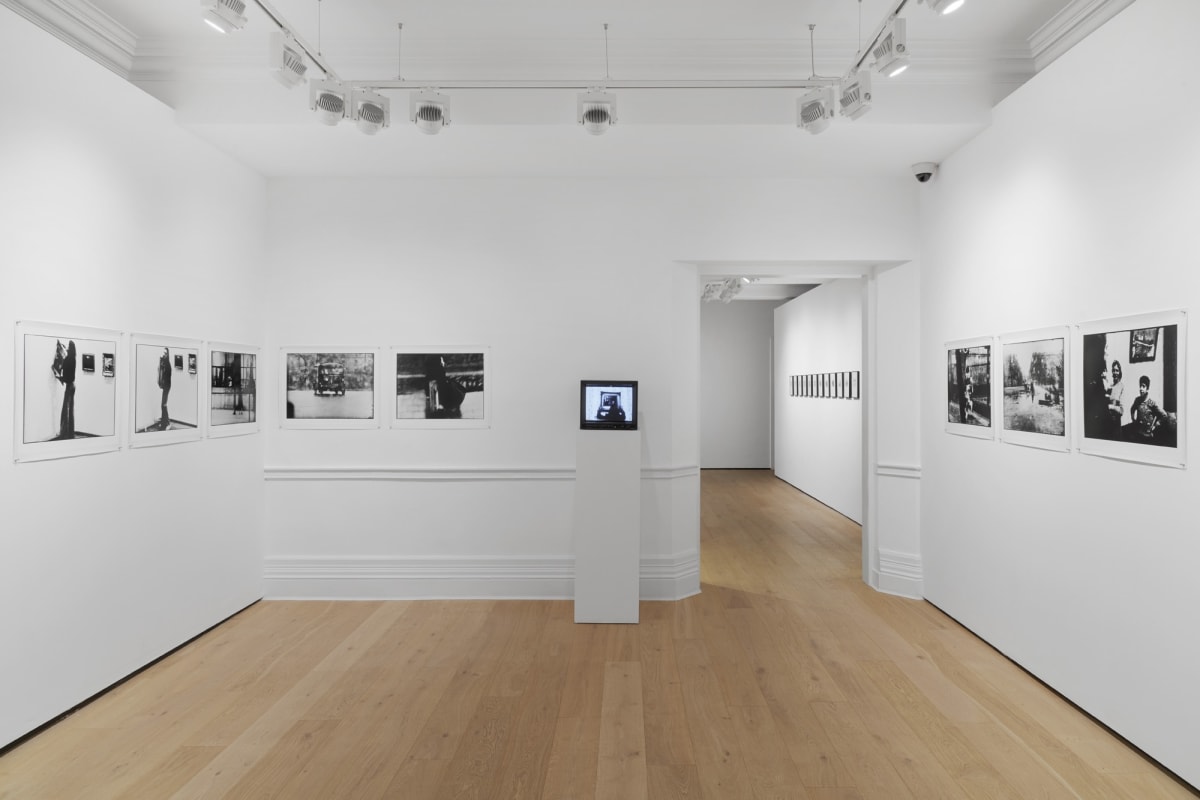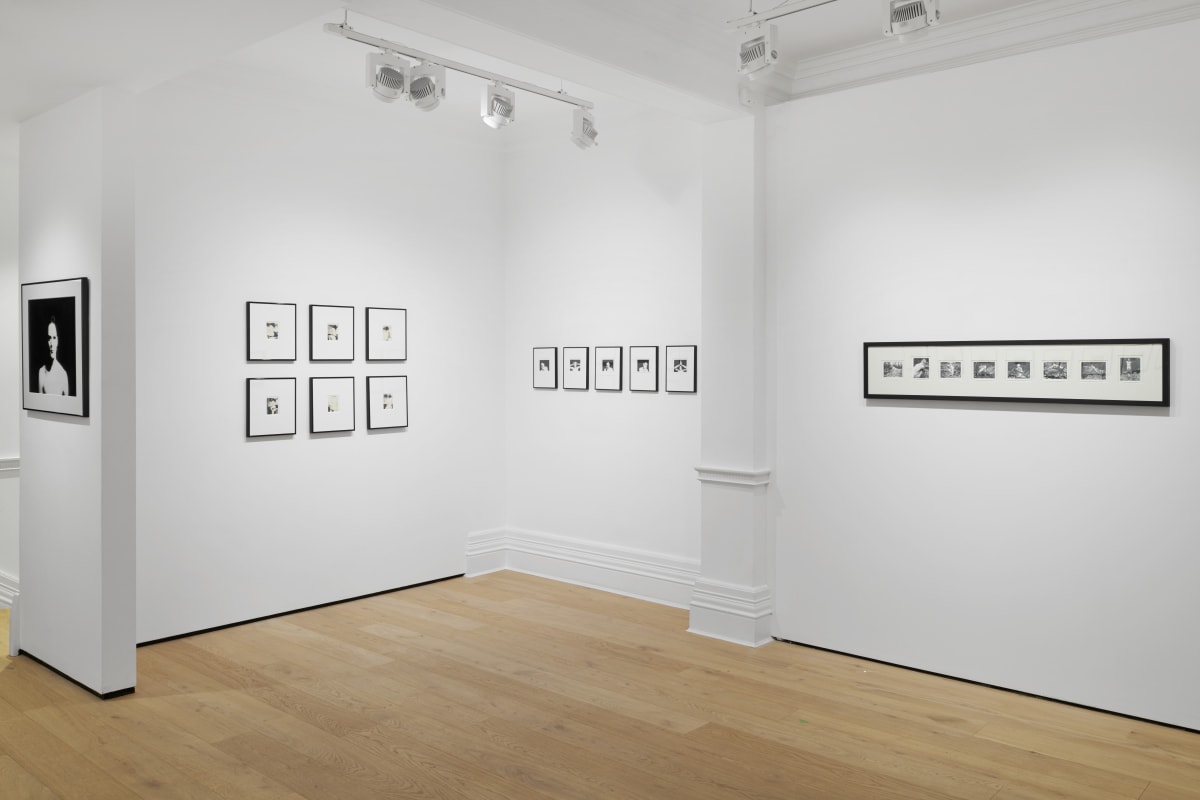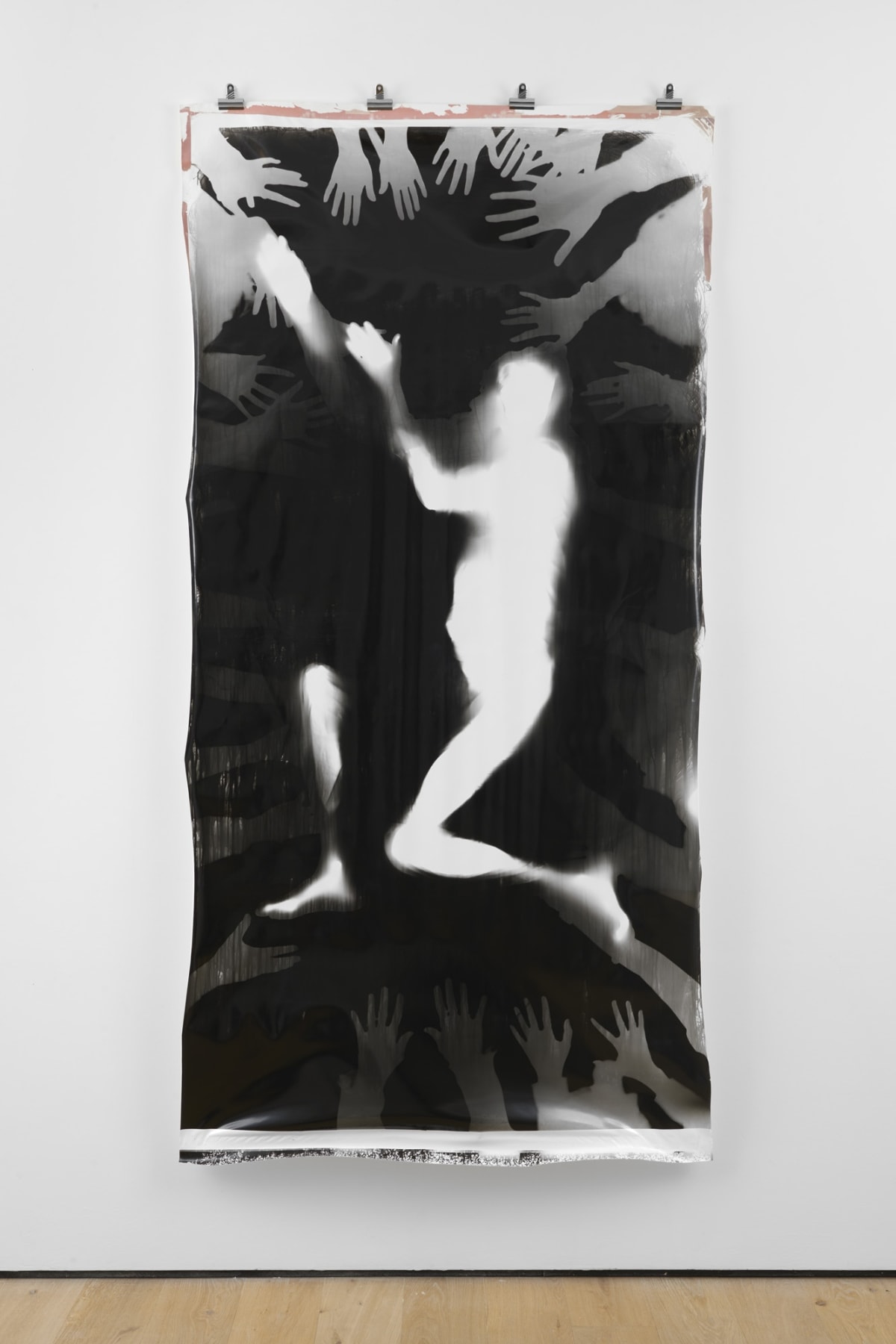ULAY
ULAY is an unclassifiable artist whose trajectory amounts to a radically and historically unique oeuvre operating at the intersection of photography and the conceptually-oriented approaches of Performance and Body art.
His first exhibition with Richard Saltoun Gallery, and his first in London since 2013, focuses on the artist's remarkable photography and his long-standing commitment to exploring and expanding the medium. Starting with Ulay’s early works in Polaroid from the 1970s, the exhibition spans to include performative photography, featuring new works exhibited to the public for the first time, as well as a film of one of his most important actions: Irritation - There is a Criminal Touch to Art (1976). The exhibition has been curated by Birte Kleemann.
-
 ULAY, Mudras, 1974
ULAY, Mudras, 1974 -
 ULAYS'he, 1973Digital print on Hahnemühle Baryta paper
ULAYS'he, 1973Digital print on Hahnemühle Baryta paper
Printed 2018Sheet: 77.5 x 100 cmEdition 1 of 5 + 1 AP -
 ULAY, Traumatic Fears, 1973
ULAY, Traumatic Fears, 1973 -
 ULAY, White bride, 1973
ULAY, White bride, 1973 -
 ULAY, Untitled, 1974
ULAY, Untitled, 1974 -
 Marina ABRAMOVIC & ULAY, Relation in Space, 1976
Marina ABRAMOVIC & ULAY, Relation in Space, 1976 -
 ULAYDeath of a Transvestite, 1973Digital print on Hahnemuehle Baryta paper
ULAYDeath of a Transvestite, 1973Digital print on Hahnemuehle Baryta paper
Printed 2017
Unique138.5 x 109.5 cm
Framed: 142.5 x 113.5 x 3.5 cm
Introduction to the exhibition by Birte Kleemann:
“I have been working with two media: one is performance and the other is photography. I think it is a great marriage. It started with photography and it became performance, then it went back to photography. The term performative photography was created later, it didn’t exist forty years ago. The union of performance and photography was really a unique event in the history of photography and in the history of performance” – Ulay.
Richard Saltoun Gallery is pleased to present its first solo show with groundbreaking conceptual artist ULAY, who has defined the field of Polaroid photography and performance art for generations. The exhibition aims to show the historical importance of the artist’s work, whilst also presenting him as a contemporary artist with new work created especially for the show.
Alessandro Cassin noted in a recent interview with Ulay that the artist’s career “began with photography, evolved into performance and returned to photography.” This evolution is at the core of the exhibition at Richard Saltoun Gallery, featuring many works from the artist’s vast output, several shown here in public for the first time. The exhibition has been curated by Birte Kleemann.
In the early 1970s the hand-held Polaroid camera became Ulay’s artistic medium of choice. He states: “as soon as I began using the Polaroid camera, mainly pointing it at myself – a practice I called Auto-Polaroid – I immediately discovered its performative elements. Taking Polaroids was a performative act for me: I performed in front of the camera. These were intimate actions, carried out in the absence of a live audience, ephemeral in nature, yet arrested in time through the Polaroid.”
Aspects of this early intimate and personal research can be seen in a number of series on show: Traumatic Fears (1973); Untitled (1974); and S’he (1973); as well as Sex-stretcher (1974); Elf (1974/1975); and Bene Agere (1974), where the artist used the camera as a tool to both investigate and modify identity whilst exploring socially constructed notions of gender. In these works, Ulay questioned not only his own sexual identity but also the hybrid, fluid nature of sexuality. When exhibited for the first time, at Seriaal Gallery in Amsterdam, the result was shocking, with the work deemed “difficult to look at, the form of it, the feel of it, the content of it.” Ulay would later go on to use the largest polaroid camera that exists, shown here with the work Not My Cup of Blood from the 1992 series Can’t Beat the Feeling – Long Playing Record.
While the result of the polaroid is similar to performance – one single image, unique and non-reproducible – it is an object in itself, defining a moment in time. In contrast to the performances for which Ulay has become known, often in collaboration with his former partner Marina Abramović, Polaroids channel and suspend time. To Ulay performance is ephemeral.
Ulay’s commitment to exploring and expanding the medium of photography, whilst breaking new ground in performance art, had the artist travel many places in a geographical as well as in an experimental sense.
One of Ulay’s most important performative actions Irritation – There is a Criminal Touch to Art (1976) is featured in the exhibition through photographs and a film describing the event. His close friend Charlemagne Palestine gives the account: “People were talking about how he had entered one of the Berlin museums and stolen a painting by Hitler’s favorite painter, Carl Spitzweg, in what is referred to as ‘the Berlin Action.’ There were also rumors about him having written a manual on how to steal a painting. I could not believe they were talking about the same person I had known. I used to tease him, I mean, I thought of myself as the wild one, throwing myself onto people and doing all kinds of outrageous actions, not him! He seemed to me like a perfect gentleman: I simply couldn’t imagine him stealing paintings! Only later did I learn the details and scope of that action.”
The ‘Berlin Action’ would indicate a new beginning for Ulay, marking his collaborative period with Marina Abramović, oftentimes exploring relationships with them functioning as polar opposites in their actions. Ulay was by many considered to be of the more introverted type, while Marina was seen as more of an extrovert. Living in their truck for years (the truck became the vehicle in their Relation in Movement work in Paris, 1977), they became known for the most physical and direct performances, regularly exploring boundaries to painful extremes. However, as both noted, even if beaten black and blue, they would not notice the pain during the performance itself but vowed to stop the moment they saw their ability, concentration, mental recourse and energy vanish. Strikingly the audience would not dare to intervene, which as Ulay’s explains, meant “that they became part of what was happening. The audience became an accomplice to our self-mutilation or auto-aggression acts. I am convinced that most people perceived what we were doing as very painful, still they did not interfere.” These performances are to date an important aspect of both artists’ oeuvres and are undisputed in the canon of art history as the most groundbreaking and celebrated performances ever created.
“It must have been the mid to late 1970s. In Italy people were beginning to talk about Marina and Ulay: most people did not know much about them, but a certain aura surrounded their names. A friend told me they would be in Ferrara, and instinctively I went. I saw them perform once and was hooked, blown away. They were doing something we did not have words for. I remember after the performance people in the audience weren’t really speaking. It was more as if they were trying to organise their feelings about what we had just experienced. ‘Experienced’ was the key word” – Silvio Wolf.
Because of the nature of their performances, Ulay and Marina followed an unwritten rule: the work would become pathetic if it carried on through the pain or if it was repeated like a play. It would lose its ephemeral magic, reduced to mere repetition. The idea of being ‘in the moment’ can be found in both Ulay’s performances as well as his photographic work. This notion of authenticity and a keen understanding of his social and geographical surroundings are driving forces for Ulay’s work that can be found as a red thread through all his art.
In a special performative photographic event for the exhibition, Ulay will create a new life-size photogram entitled Performing Light. The event relates to earlier performances involving photographic material that started out with iconic work such as the spatial Fototot [Photo death] in 1976.
ULAY (b. 1943, Solingen, Germany), the pseudonym of Frank Uwe Laysiepen, currently lives and works in Amsterdam, The Netherlands and Ljubljana, Slovenia. Recent solo exhibitions and performances have been held at Depart Foundation, Los Angeles, CA, USA (2017); Cooper Gallery, Dundee, UK (2017); Schirn Kunsthalle Frankfurt, Frankfurt, Germany (2016–2017); Fondazione Prada, Milan, Italy (2016); Musée d'Art et d'Histoire, Geneva, Switzerland (2016); Nederlands Fotomuseum, Rotterdam, The Netherlands (2015); Stedelijk Museum, Amsterdam, The Netherlands (2015); Tate Liverpool, Liverpool, United Kingdom (2013); C-Space, Beijing, China (2011); and National Centre for Contemporary Arts (NCCA), Moscow, Russia (2007). His work, along with his many collaborations with Marina Abramović, is featured in collections of major institutions around the world, including the Stedelijk Museum, Centre Georges Pompidou, Kunstmuseum Bern, San Francisco Museum of Modern Art (SFMOMA) and The Museum of Modern Art (MoMA).
Birte Kleemann has curated exhibitions with Rose Wylie and Pat O’Neill, as well as the group exhibition ‘Shakers and Movers’, performance art in Germany from the late 1950s to 1970s, featuring artists Yoko Ono, Nam June Paik, Jürgen Klauke, Valie EXPORT and many more – all for VW Berlin, Germany. In addition to her role as an independent curator, she has been Director of Michael Werner Gallery, New York since 2011. For the gallery, she has organised the exhibition ‘Jörg Immendorff: LIDL Works and Performances from the 60s’, as well as other museum projects, such as Markus Lüpertz at the State Hermitage Museum, St. Petersburg, Russia in 2014 and A.R. Penck at Fosun Foundation, Shanghai, China in 2017. She is co-curator of a forthcoming survey show about art in Germany from the past 100 years with Nanjing University’s AMNUA Museum, opening March 2019. Kleemann is the founding Art Editor of the fashion magazine KingKong, where features included: Edward Kienholz, Judith Bernstein, Ericka Beckmann, ULAY, Henri Levy, Ed Atkins, Adrian Piper and Peter Saul. Previously, she was Director at PACE Gallery, where she curated the survey ‘Joseph Beuys: Make the Secrets Productive’ and the extensive group exhibition ‘Berlin2000’. Prior to living in New York, Kleemann was Director at Galerie EIGEN+ART Berlin for six years and co-founded a contemporary gallery in the city in 2007. Further curatorial projects include ‘Misericordia’ at Prism LA, bringing together baroque art work with contemporary installations, and ‘Praxis’ at Wayne State University, Detroit, focusing on the diverse political movements of the US-Vietnam war era.
Ulay: 'Performing Light' from Richard Saltoun on Vimeo.


